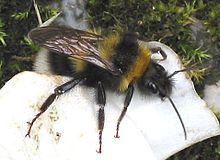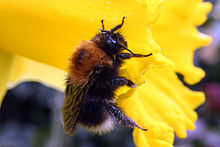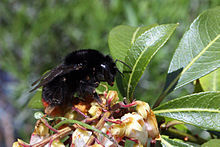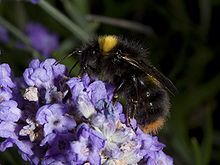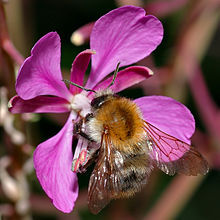We all know that bumblebees play a crucial role in pollinating our fruit and vegetables but can you identify the species in our gardens, hedgerows and fields? To learn more about these vital creatures, a Bumblebee Walk and Bee-Tea was arranged round the village of Great Musgrave on the afternoon of Sunday 28 June 2015. Some 30 people, including 8 children, met on Musgrave Church Field by the River Eden, close to St. Theobald's Church. Mandy Oliver, from the North Pennines AONB Partnership was our guide. She was a Community Officer in their Nectarworks Project which ran from 2014 to 2017 to enthuse, educate and enable communities to take action for bumblebees and other pollinators by restoring and increasing flower-rich habitats. Unfortunately changes in agricultural techniques and reductions in wild flower habitats are decreasing bumblebee numbers in many places.
As the rain cleared and the sun came out, Mandy first described the fascinating life of the many species of bumblebee and how to identify them. We then set out through the colourful hay meadow by the river, into the churchyard, then up Church Lane to the village and finally to the panoramic viewpoint over the upper Eden valley.
Five species of bee were found. Garden bumblebees were feeding on the pollen of foxgloves. Tree bumblebees nest in the rear wall of the church. These recent arrivals to Britain from Europe (in 2001) do nest in holes in trees but also in bird boxes and under house eaves. They are spreading rapidly north, now to Scotland. Red-tailed bumblebees were feeding on the extensive yellow rattle in the meadow – a lovely black bee with a bright red tail. Early bumblebees, a small bee with a little reddish tail, were seen on the snowberry on the way up to the viewpoint. Common carder bumblebees, a long-tongued brown bee that likes to make its nest just above the ground in tussocky grass, were feeding on bush vetch on Church Lane. However we saw far fewer bees, and fewer species, than expected, probably due to the rather cold summer that year.
Garden bumblebee Tree bumblebee Red-tailed bumblebee Early bumblebee Common carder bee
(Bumblebee Conservation Trust)
We then returned to the restored Musgrave Tithe Barn, for children’s bee activities and a splendid bumblebee inspired Bee-Tea. There were two tables, one with produce that had been pollinated, and the other which had not. It was a most enjoyable and informative afternoon. We all left well-fed and with advice about how to encourage bees in our own neighbourhood.
(This appeared in the Cumberland & Westmorland Herald)
For more information on bumblebees, visit the Bumblebee Conservation Trust.
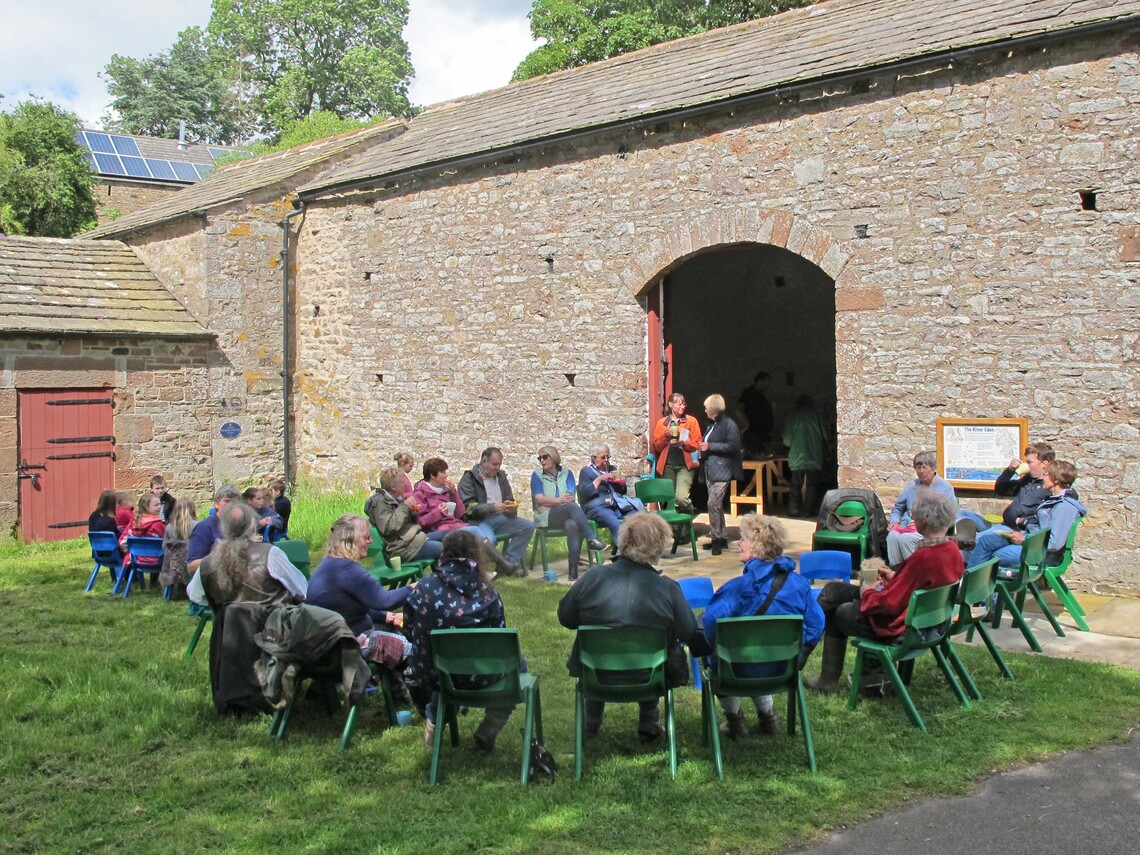
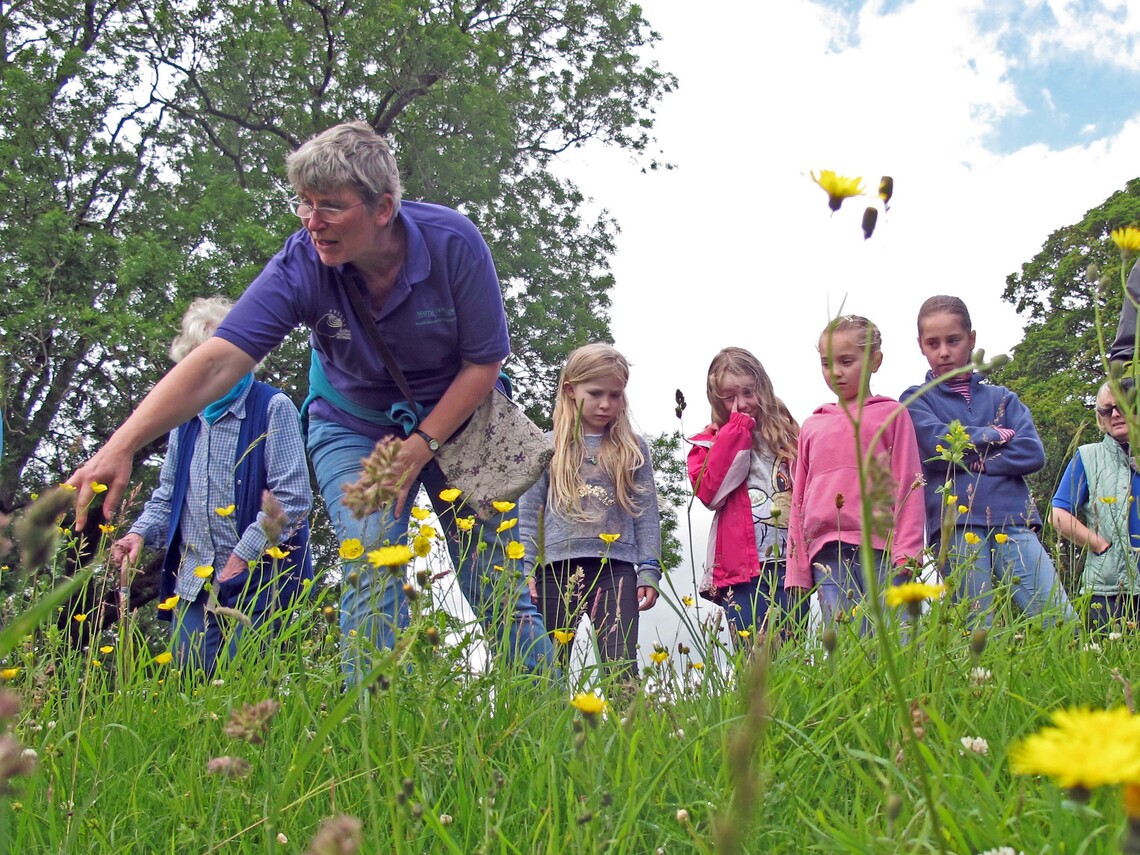 Bee-Tea Mandy Oliver spotting bees
Bee-Tea Mandy Oliver spotting bees

